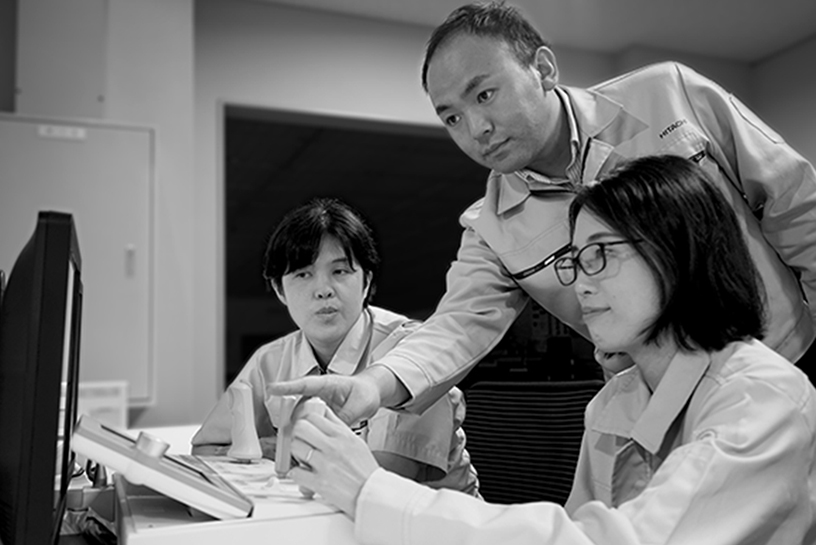Engineers of the new-generation image control engine responded to the demands of the medical field with technologies. They have always been on the same page through sharing "intentions", not just information. What does Konosuke Tenmei mean by "precision"?
Our final product is an image — one of the most complicated areas. My specialty is developing the imaging engine called “VISTABRAIN”. This is responsible for the entire quality of fluoroscopy and radiography. I asked myself, “How far should I pursue, and how much should I respond?” Maybe it is an endless field that no one knows.
Our final product must be a solution to customer issues. This is the precept which I have lived by in consideration of doctors who make diagnoses and decide treatment strategies through X-ray images.
“I want to see clearly. Make it clearer. Make it brighter.” Having those requests, what kind of “solution” can be found by replacing these with image processing technology? Is there anything that can be done not only with image processing technology but also with X-ray amount and detector performance? This is what I think about 24/7.

CUREVISTA Open constantly senses a lot of information in real-time. The data also includes “information that has not been fully utilized for image processing in the past” such as X-ray conditions and X-ray irradiation range. Focusing on using this information as an image expert to improve image quality, I started developing stable and high-quality images.
The most important point in creating images is that clinicians and radiologists can make precise diagnoses and treatments. It's not just a simple “high image quality”. The image quality has to adapt to changes like a chameleon”. Such expectations from the medical field have become an important basis for my work.
It was a challenge to cater to them because I have created from “0 to 1” instead of brushing up the existing engine. Generating many new algorithms in a short period. Comparing them. Then finding the optimal solution. I repeated this process for days.
When the algorithm was finally complete, there are various restrictions as well. For example, when adding a new image for processing, I had to reduce processing time within a few milliseconds. It was a continuous cycle of trial and error.
I still remember the day the project was launched. It was 2017 and members were selected from various departments. A “core value” was selected by our team members who came from different backgrounds. Since then, our core value has remained unchanged uniting us as a team. We naturally shifted information sharing to “will sharing”.
CUREVISTA Open was completed as our best work. However, this is not our final goal. Our goal is to always be the first to implement the latest technologies that contribute to the evolving healthcare environment. Moving forward, I am planning to develop VISTABRAIN, the imaging engine, into a “better brain”.

















